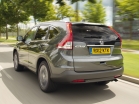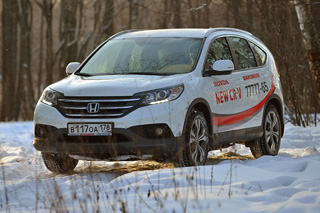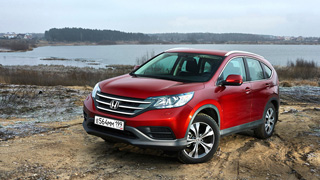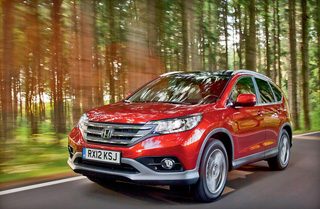Honda CR-V test drive since 2011 crossover
Test drive of the new Honda CR-V in the Russian modification from Drom.ru
Like many popular models produced for a long time, the Honda CR-V crossover, of which since 1995 more than five million pieces have already been sold around the world, has survived a different worldview in its previous generations. In the sporting, tight, lightweight, laconic, but sainless and slightly depleted by SUV of the second release, and already completely fifty, who was leaning away from the importance of the deputy of the third convocation, who unequivocally needed a more voluminous engine for the status.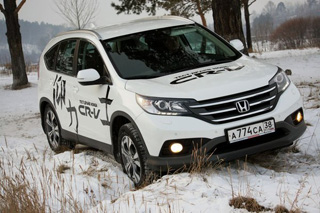
What's new?
And here is a fourth -generation car. Changes to the face! Moreover, literally: outwardly, the crossover obviously failed the former folded forms of Sharpei, gave way to sweeping, but smooth, clear and pointed lines, the hood became shorter, and the windshield is more mowed, and the entire body has gained a fry strong structure. Unless the back can cause disputes to someone, it will seem heavy, figned.
In general, the geometry has changed little: the same base, width, track, and the length is even shorter by 3 mm. But the body became voluminous vertically 10 mm higher, but at the same time 15 mm lower, that is, so much lower than the clearance, which now is only 170 mm. Why? The authors explain categorically: the consumer makes more requirements for the appearance, the level of equipment, comfort than for off -road characteristics.
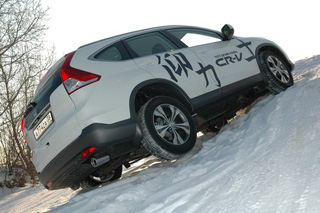
The thresholds of the novelty are quite high, but under the bottom there is a smooth, but not inspiring confidence in its strength, a protective plastic box
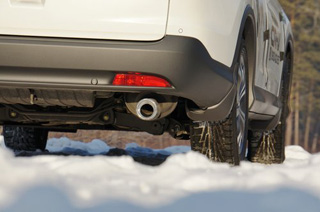
The lower body perimeter is dressed in a protective belt of unpainted plastic for a crossover with an almost passenger clearance is a very necessary attribute
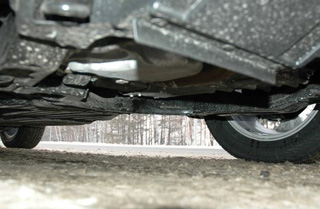
The clearance reduced to 170 mm is measured to the beam of the front subframe, which, at least, is located noticeably below the pallets of the engine and the box. In addition, you can set an additional steel protection of the motor compartment, but only for an additional fee, as an accessory
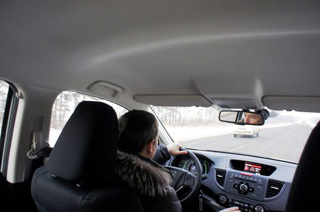
Here they are, the results of the increased body height: the supply of space over the heads in the new CR-V is very large, even a tall person is unlikely to rest his head to the ceiling, and a medium-sized driver can go almost in the cylinder of a good 30 centimeters of space above him
But the differences between the new CR-V are not so much in appearance. Compared to all previous ones, the fourth generation model carries a lot of innovative in all limits: in ergonomics, equipment, chassis design and other things. Thus, the new CR-V has acquired better decoration materials, its interior is significantly crossed, the trunk became 65 liters more, a new system of transformation of seats was introduced, noise insulation was improved (the noise level is reduced by 3 dB), the ECO movement mode was proposed, and the steering wheel power amplifier has become electric, with electronic regulation of effort.
The basic version of Elegance includes not only eight airbags and a disconnected stabilization system, but also a two-zone climate control, cruise control, headlights, daytime running lights, tire pressure control, a 5-inch multifunctional display, and electroregulation of the lumbosacious support of the driver’s chair. In total, two equipment options are provided: a richer version of Lifestyle still has a tilt of mirrors when turning on, auto -muffled, front and rear parking sensors with a rear view camera, Bluetooth, signaling, front fogs.
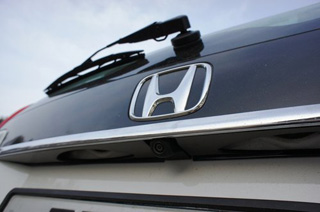
The reverse video camera hid in a traditional place on the lid of the trunk above the recess under the license plate
At the first stage, a 2.0-liter 150-horsepower engine is proposed, which is available for both levels of equipment with a 6-speed manual transmission or a 5-speed automatic transmission. Moreover, the engine is officially allowed to feed with 92nd gasoline, and the machine acquired a sports and manual mode with steering wheel switching petals. In turn, there are changes in suspension, including its course increased by 10 mm, which is designed to improve energy intensity and increase geometric cross -country ability.
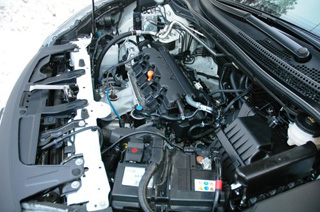
At the first stage, only a 2.0-liter gasoline engine of 150 forces is proposed, but available with the manual transmission and automatic transmission. In the spring, a 2.4-liter capacity of 190 hp will appear, and the diesel for Russia is closed until better times, until the appropriate quality fuel appears everywhere.
Important changes and, in principle, operation of all -wheel drive. As you know, DPS (Dual Pump System) was used to automatically connect the rear wheels in CR-V the original and reliable system of two pumps, but working with some delay and not regulated. Now everything is radically finalized and designated simply as Real Time AWD. The rear axle drive is headed by an electro -hydraulic unit, where the electric pump maintains constant pressure, plus electronic control, which operates together with other on -board systems. This should provide an instant reaction and generally increase the safety and reliability of movement in all conditions. For example, now, in any case, at starting, both axes are synchronously involved, the degree of supply of the moment changes depending on the driving conditions, when axle axlers, the effect of inter -axial blocking is created, and under ordinary conditions the rear wheels are completely disabled. In addition, the new block weighs 17% less than the previous one and is 59% less, due to internal friction forces, all this also works to increase dynamics and fuel economy.
So, theoretically new CR-V appears thoroughly rethought, but how is this all perceived in reality?
We look around
The first thing you note in the driver’s chair is a comfortable landing, with a good anatomical margin in width, which will be appreciated by the most heavy people, as well as a more refined atmosphere. There are leather -like soft plastic, inserts made of velvety material and even plausible decor elements for metal. Moreover, at the bottom of the central console, the pillows are carefully provided with restless knees will be soft! Yes, and the central tunnel grew up very helpful. Maybe someone seemed preferable to someone in previous versions, however, the isolated driver of the driver still looks more logical and simply comfortable.
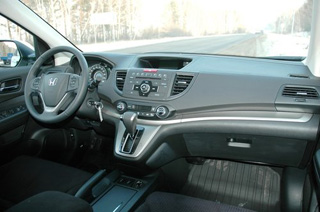
The front panel of the American style symbiosis and the new Honda interior design. There are no complaints about the assembly quality, but there could be more soft plastic
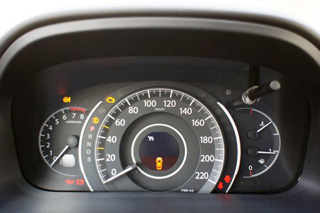
The readability of the devices is good, the lion's share is occupied by a huge sailor of the speedometer with the flight comprehensive compartment screen inside, around which a tachometer and signs are located like the ears of Cheburashka. In addition, the highlight is the changing color of the speedometer rim from calm white at low speed to an alarming red at high
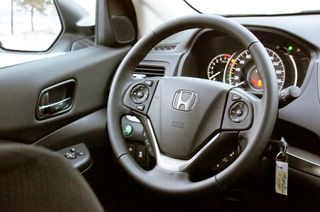
The steering wheel is almost overloaded with additional functions: here is cruise control, and Bluetooth, and control of the on-board computer. And behind the knitting needles also hid the petals of manual gear shifts of the automaton
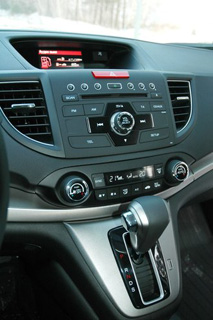
The standard radio is characterized by very large and widely located keys and intuitive control. But information about changes in the settings is displayed on the central display, which requires re -focusing
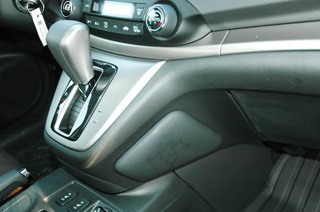
A tide of the transmission selector on the sides acquired soft patching lining, protecting the legs of the driver and the front passenger from contact with the hard plastic of the central console
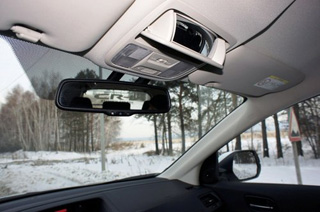
There were no complaints about overview through external mirrors. But in the intra -junction mirror the viewing sector is small, and the raised central headrest reduces the viewing area even more. But in the eyelet there is a panoramic parental mirror
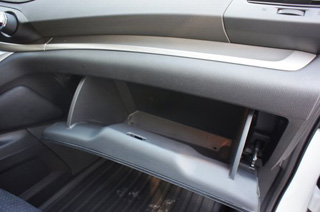
The glove box has a microlift, but is deprived of not only interior decoration, but even holders for cards or fountains. And its volume is small, however, A4 paper is included there

Between the front seats there is a triple boxing box with a lid, as well as a large duffel box in which the USB-slope, AUX entry and an additional electrical tank are hidden
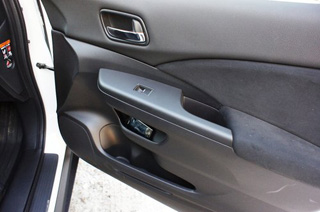
Pockets in the front doors, alas, are small. As a compensation, an additional shelf is offered under the door handle-toe (you can throw a small cell phone there)
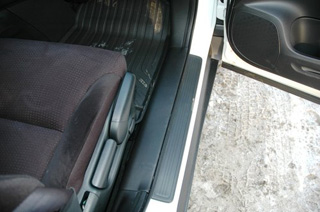
The thresholds in the front door are cut, which reduces the likelihood of getting down clothes

At the same time, the box lever remained in a convenient place on the tide of the central console and did not squeeze the good box and a battery of three cup holders right on hand on the tunnel. In general, it is difficult to find flaws in ergonomics, except that in the salon mirror, the view through the rear window looms with small embrasure, but the side mirrors generously cover the space. Yes, and the frontal and lateral review is quite free, for which the designers resorted even to such cunning as the recesses in the cover of the front racks, which makes them thinner than usual.

Unlike salon, side mirrors give an excellent review back, and besides, they do not particularly interfere with the side review
The back of the cabin now exactly corresponds to the concept of the luggage compartment. Neither to you separating shelves, nor underground sections, nor other creative joys, but simply a spacious hold with a low floor, under which the dock and the instrument lie like in some inexpensive hatchback. Well, okay, it may be better for most cases. But what a pleasant innovation the rear seats are hung up: he pulled the lever or loop, and they instantly developed, and can be separate. It turns out a large platform, and although with a small step and a slope, you can even spend the night quite conveniently.
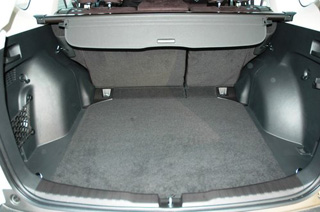
A distinctive feature of an almost 600-liter trunk of its height between the level of the floor and the folding protective curtain, as well as a wide opening that allows you to easily load the overall load


There are a mesh pocket for small things on the sides of the trunk, a holder for a fire extinguisher, an additional electric carrot, as well as convenient handles for folding the rear sofa along the sides of the trunk, a mesh pocket is provided, a holder for a fire extinguisher, an additional electric carrier, as well as convenient handles for folding the rear sofa

The seats are separately folded in one second by pressing the keys from the back or pulling the loops from the entrance, but they are already given to their original position manually. The length of the floor in the unfolded form (to the raised pillows) is 1570 mm, however, the backs lie down with a small step and inclination
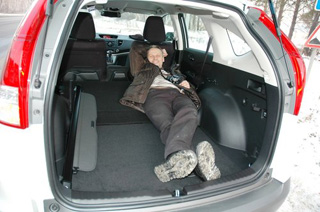
If anything, the size of the trunk will allow you to spend the night quite freely
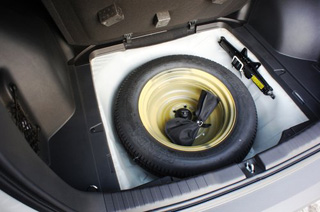
Against expectation, instead of a full -sized spare wheel in the trunk lies only a dock. However, thanks for this, since in other markets in its place the tire remote control is generally offered
But, in fact, for sitting, the back places were not perfect. The supply to the front seats is good, there is an adjustment of the back of the backs, the width is spacious, but the pillows themselves are short, their slope is not optimal, and the distance from the floor is not very large. And this is all the more surprising at the increased body height, although the proprietary plane of the floor in this zone itself remains dignity. In addition, the rear doors actually open by 90 degrees, this also gives its advantages.
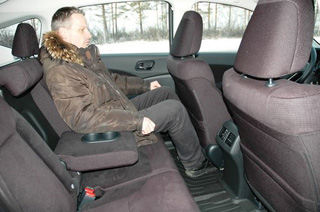
Even with a fully pushed back the front armchair, there is enough space for the knees from behind the seated
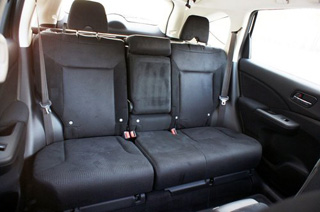
The rear sofa does not differ in obvious profile, which will allow it to be placed on it and the three. However, two passengers are almost flat seats and a low -standing back will seem not too comfortable

Two cup holders in the folding armrest of the rear sofa is a little that is available for the convenience of the rear passengers
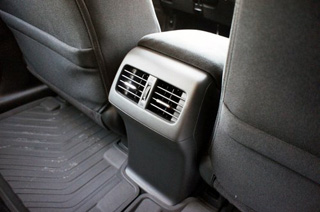
Additional blowing deflectors for the rear passengers are located between the front seats: in the conditions of Russian winter, their presence will not be superfluous

The pocket in the back door is even smaller than the front, but there is no additional shelf. But the rear doors can be opened almost 90 degrees, which noticeably facilitates landing on the rear sofa
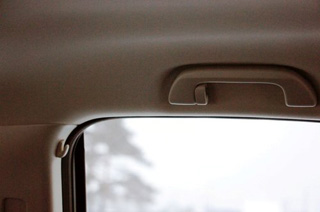
An additional hooks for clothing are provided above the opening of the rear doors: one one is integrated into the ceiling handles, and one more in the upper part of the central racks
We are going!
In motion, you quickly understand that the noise level really has become lower, and the smoothness of the course is higher. Huge wheels on 18-inch discs, even with winter tires with a 225 mm width, roll quietly and softly, rolling around the typical road conditions. But if the potholes and potholes are higher than the average, the beauty of large wheels comes out sideways: the work of the suspension with weighty unsaved masses begins to respond with heavy pokes. Under such conditions, the speed has to be reduced to the level of an ordinary passenger car, which seems to be not quite in status.
But in general, on the go, CR-V left the impression of a whole and sufficiently balanced car, taking into account that it is configured for calm and economical movement. Moreover, the economy here, apparently, is put at the forefront: the special green button ECO makes outright phlegmatic from a melancholy crossover. If in normal mode, the car at least tried to keep up with the acceleration when pressing the gas pedal, then in eco-mode at the start there was a feeling that the engine was pulling the machine through a soft and long rubber cable.
And about the kik-Dawn in the ECO mode, it’s better not to forget you won’t wait! Often, the machine either does not react to pressing at all, or suddenly nervously jumps a couple of steps lower, which may not be required. It is not possible to work ahead of the manual according to your desire. In this sense, the character of the Honda machine gun resembles that Mazda CX-5. Apparently, the desire for maximum savings leads to such similar results.
The S mode in the transmission makes CR-V more lively. But still, the character cannot be called energetic. Yes, the 2.0-liter engine is magnificent in itself: it is moderately Shumen, spins well and is balanced in characteristics. But it develops its 150 forces only at 6500 revolutions, and for the average-sized crossover, it is still rather weak: the power is enough for more or less cheerful movement in the city, and nothing more. Frankly active riding begins to tire with the constant promotion of the motor, which is not a solid and comfortable crossover to a face. And comfortable steering liners of manual gear shifts almost do not affect the situation: the box still does not hold the selected gear when the extremely high or low engine speeds are reached.
Outside the city, the situation is similar: if you go calmly and not too fast, then there are enough motor. However, by 120 km/h, its capabilities are markedly handed over, and after 160, acceleration completely comes to naught: the engine is pushing, the electronics artificially holds the fourth gear in the box, and no acceleration. However, it is worth paying tribute to the car: even at speeds close to the maximum (our capabilities on an even smooth area limited Nokian Hakkapeliitta R Winter Tires with a speed index of 170 km/h) control did not require any special concentration of attention. The crossover flies with a falcon: it goes confidently and tightly along the asphalt, not the spine on small irregularities, without swinging on larger ones and not too hard in corners.
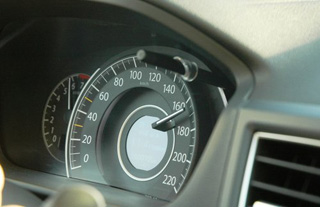
During the tests for the maximum speed, we ultimately reached the speedometer to 175 km/h, after which the car rested, and not why the winter tires were imposed on the speed restrictions
It is not for nothing that the Khondovtsy initially brought natural running qualities and handling of a naked machine in the old fashioned way, and only then adjusted for this business the configuration of new-fangled electronic systems. As a result, the same stabilization system does not help to drive, but only invisibly insures the driver from too rude mistakes. Still, the steering wheel is more legive, for the electrician, no matter how tuned it, will still level feedback with the road.
But all this is on the asphalt. And if you move off him on a country or completely turn into the fields? Have you remained in CR-V at least some kind of patency, or did everything disappear with a former clearance and a folding table for a picnic?

In quick and slippery bends, CR-V demonstrates classical controllability characteristics classic for such machines: the demolition of the front axis under the gas, and the skidd after its discharge. At the same time, if the stabilization system is disabled, then it is necessary to extinguish the starting skid immediately and quickly, which, however, is not much difficult: the car remains obedient and predictable
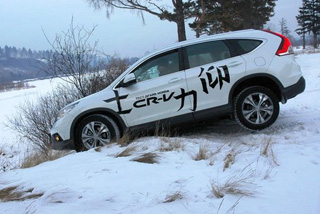
The rush suspension, although increased, is only 10 mm, so the wheels are still hung quite easily
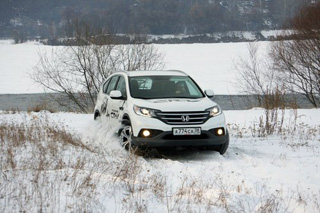
Even with a disconnected stabilization system on a snowy field, the wheels are poorly broken into a slip
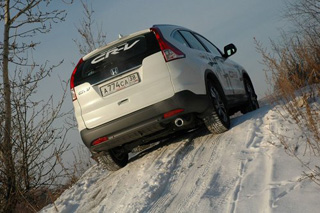
If the tires with good clutch, then the forcing of such holves even in the case passes easily, except that on the bend you hurt a low belly

The new CR-V can even storm a small transverse track, however, it is not worth overestimating the capabilities of the crossover: both transmission capabilities and geometric parameters quickly reach their limit
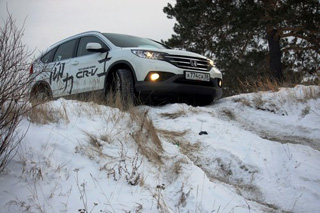
It will not compose problems from such a hill. But can CR-V get back?
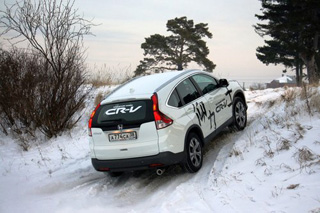
With the stabilization system disconnected, the drive wheels quickly break into the boxes and roll out snow to the ice state, not allowing the machine to continue the ascent
At the end of autumn, there is no deep snow yet, and a 20-centimeter cover, as expected, did not deliver problems. To be afraid in a clean but uneven field, it is worth only diagonal hanging or landing on the belly. Moreover, it is the angle of the ramp that becomes a weak place: whether a joke, if the car shortens the surface in the same place as many cars. In addition, from below, CR-V has plastic shields: well, how do you break and leave them in the next rut? It is good that overhangs remain more or less acceptable, and the lower parts of both bumper are prudently covered with unpainted plastic. But in any case, hard reliefs for the new CR-V are contraindicated.
How does a new so -ce coupling manifest itself? The changes went to the car clearly for the benefit: after all, if earlier the four -wheel drive was connected only after a certain slipping of the front wheels (in which they could easily have time to seduce or find the slippery surface under them), then the new system activates all -wheel drive much faster at the first signs of the front line slip. And at the start of the coupling, it is completely packed at all, providing a moment on both axles. When we tried to move off on a steep rolled rise, with the VSA stabilization system, the engine immediately pulled into a slip along one front and rear wheel.
And if the stabilization system is not disconnected? Usually, an anti -book in such situations simply strangles the motor, not leaving even a chance of movement. But CR-V went! True, not far to the first ledge on the rise, where the clutch of tires with the surface finally disappeared. But I went, and without activating the Hill Start Assist system, helping to move in the hill. And on the lane, when two shallow (but significant even for crossovers) grooves moved, activated VSA did not allow the wheels how to polish and roll snow into an ice crust in vain. And therefore, our recommendations are clear: if you do not want or are afraid to overcome the obstacles of the course, it is better not to turn off electronic assistants!
Vasily Larin, Alexey Stepanov
Prices and competitors
Perhaps one of the main trump cards of the new CR-V lies in the proposed ratio of parameters and prices, which is especially visible against the background of competitors. So, the basic price for the above Elegance equipment level with a manual box is 1,149,000 rubles, with an automatic transmission 1,229,000 p. The Lifestyle 1 299 000 and 1,349,000 rubles, respectively. At the same time, in its class, CR-V exceeds a number of models in basic equipment and in size, and especially in the tarnetical capacity.
So, if you take popular classmates in basic versions with 2.0-liter gasoline engines without boost and with all-wheel drive transmission, the conjuncture is as follows. Mazda CX-5 from 1,245,000 rubles, Mitsubishi Outlander from 1 189 900, Toyota RAV-4 from 1 183,000, Nissan X-Trail from 1,233,000, and Koreans are far from modest, which is clearly visible in the example of Kia Sportage In the corresponding configuration from 1,139 900 rubles. Moreover, two Mazda CX-5 and Mitsubishi Outlander models are also new products of 2012.
Well, those who wish more in every sense will have to wait until spring, when the CR-V version with a 2.4-liter engine with a capacity of 190 hp appears. Paired with the automatic transmission, where in addition to everything, a leather interior will appear. The diesel versions are not expected by Honda does not consider them for the Russian market due to the inconsistency of the quality of our diesel fuel.
Technical characteristics Honda CR-V
Body
Type station wagon
The design is bearing
Number of places/doors 5/5
Engine
Type gasoline SOHC I-VTEC
The location of the engine is transversely
The number and location. cylinders 4, in -line
Working volume, cubic meter. SM 1997
Diam. cylinder/piston stroke, mm 81/97
Compression degree 10.6
Number of valves for cylinder 4
Power, l. p./about. min. 150/6500
Twisting the moment, NM/about. min. 190/4300
Transmission
Connecting, automatic all -wheel drive (Real Time AWD)
Automatic gearbox 5-speed with manual mode
Steering
River type with adaptive electric power
Radius of turn, m 5.5
Suspension
Front Mcpherson
The back is multi -link
Wheels
Alloy discs 18x7j
Tires 225/60 R18
Dimensions, volume, weight
Length/width/height, mm 4571/1820/1685
Base, mm 2620
Clearance, mm 170
Front/behind, mm 1565/1565
Equipped mass, kg 1580
Full mass, kg 2100
Fuel tank volume, l 58
Trunk volume, l 589-1669
Dynamic characteristics
Maximum speed, km/h 182
Acceleration to 100 km/h, sec. 12.8
Fuel consumption, l/100 km
City regime 10.2
Country regime 6.3
Mixed mode 7.7
Source: Drom.ru



